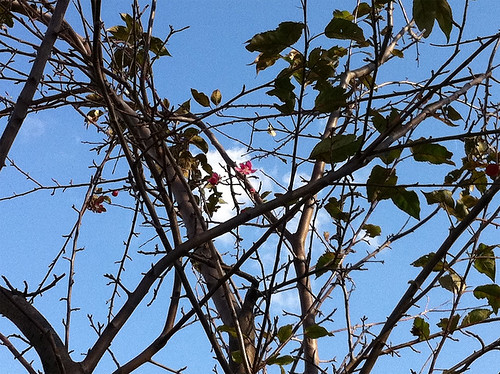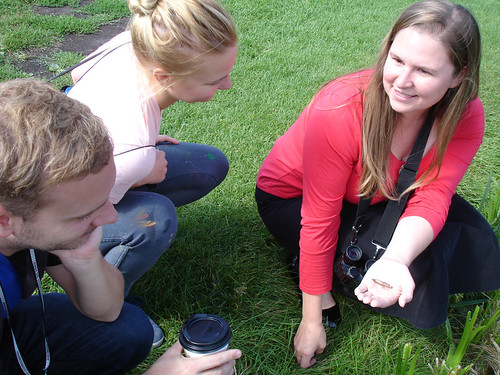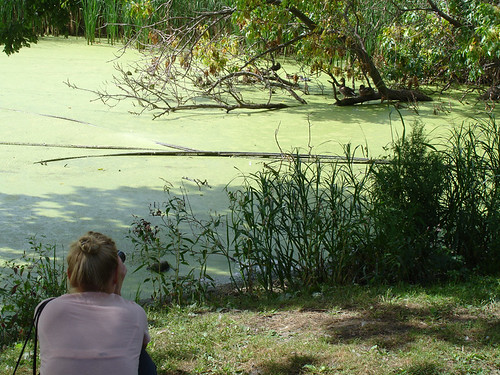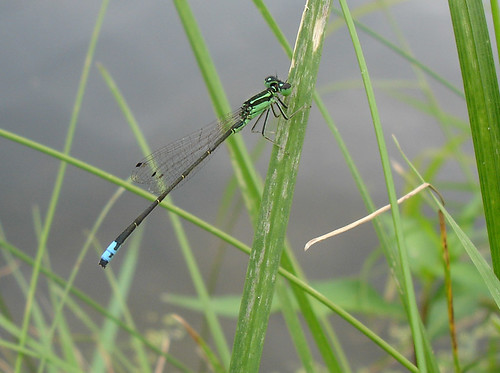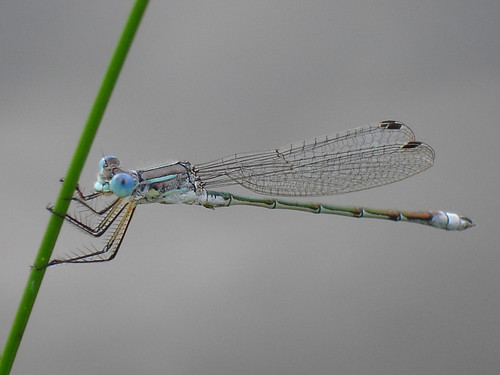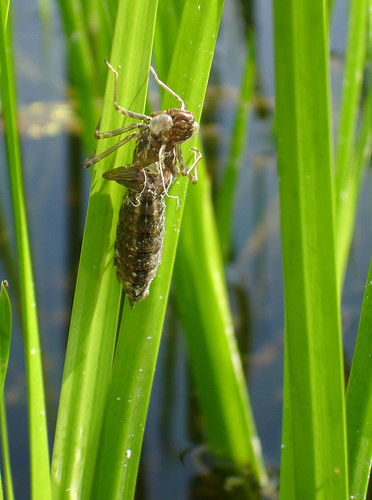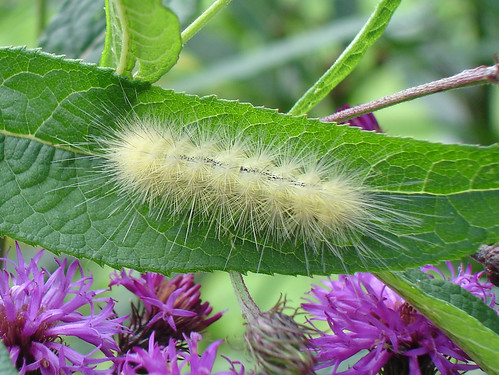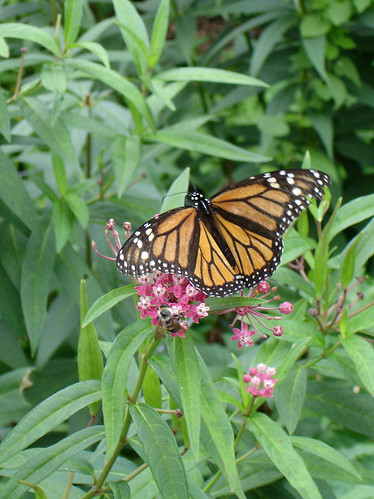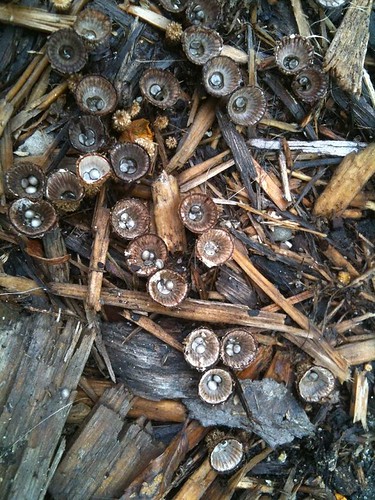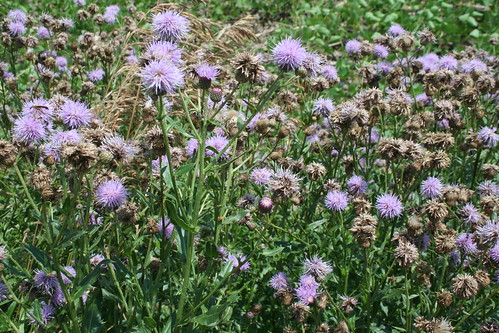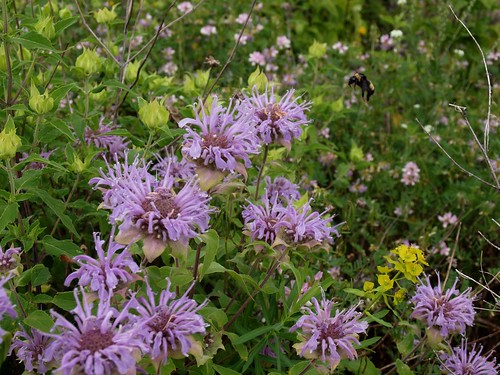What: A dawn chorus of (presumably) European Starlings
Where: Too dark to see, the calls and chatter seemed to come from the arborvitae at the Sculpture Garden's south edge
Observer: Abbie
Date/Time: Monday, December 12, 7 am
Conditions: Overcast and warmer than previous days, so warm I had no need for gloves
Monday, December 12, 2011
Dawn Chorus on Vineland Place
Friday, December 9, 2011
Crows Roosting in the City
Crows gather on winter evenings, making a racket and attracting attention. This roosting phenomena is anticipated by many and inspires curiosity. Satisfy your curiosity by listening to the MPR news feature by Dan Olson (above), which combines informative reporting with the soundscape of cawing birds.
Wednesday, November 30, 2011
Mesmerized by the Murmuration
Today presented a delightful opportunity to return to the Open Phenology philosophy:
What: A murmuration of starlings! A truly mesmerizing sight! Curious about this? Read more here.
Where: At the south edge of the Minneapolis Sculpture Garden. Other observers report that the flock makes its way here from Loring Park and then tends to continue West.
Observers: Abbie, Masami, Michael, Ben, Courtney, and others. Actually, this one is a real crowd pleaser. Everone walking by paused and commented.
Date/Time: Wednesday, November 30, 4:30 pm. The phenomena concluded by about 4:45.
Conditions: Overcast, around 40 degrees
Witness. Change. Together.
What: A murmuration of starlings! A truly mesmerizing sight! Curious about this? Read more here.
Where: At the south edge of the Minneapolis Sculpture Garden. Other observers report that the flock makes its way here from Loring Park and then tends to continue West.
Observers: Abbie, Masami, Michael, Ben, Courtney, and others. Actually, this one is a real crowd pleaser. Everone walking by paused and commented.
Date/Time: Wednesday, November 30, 4:30 pm. The phenomena concluded by about 4:45.
Conditions: Overcast, around 40 degrees
Tuesday, November 8, 2011
Honk If You Love
Canada Geese! Arriving to work this morning, I counted zero geese on the field. (But evidence of their recent "occupation" was scattered generously underfoot, if you know what I mean.) As we wound our way into the offices, my colleague Christopher and I chatted about the phenomenon—how the passing weeks saw their numbers increase, peak, and then diminish. Where are they now?
Where do Canada Geese go? As you've probably noticed, some of them will stick around over the winter months. But most of them make their way to the mid and southern United States. Here's a link to a distribution map, on Wikipedia: http://en.wikipedia.org/wiki/File:Branta_canadensis_map.png.
Four more facts about the Canada Goose:
Where do Canada Geese go? As you've probably noticed, some of them will stick around over the winter months. But most of them make their way to the mid and southern United States. Here's a link to a distribution map, on Wikipedia: http://en.wikipedia.org/wiki/File:Branta_canadensis_map.png.
Four more facts about the Canada Goose:
- Scientists have tracked geese that have flown up to 1,000 km in a day. (You didn't expect a figure in miles, did you? Of course it would have to be metric since they're Canada Geese. 1000 km = 620 miles, approximately)
- Maybe to you or me all Canada Geese look the same, but most scientists believe that there as many as eleven different races.
- Canada Geese are monogamous and most couples stay together all of their lives.
- The Canada Goose was once considered endangered. Game laws and habitat preservation programs have turned that around so effectively that they are now sometimes considered a pest.
Thursday, October 27, 2011
Overheard in my Inbox: Geese on the Field
- The volume and variety of bird songs heard from my driveway at 8:30 am. Since my attention has waxed and waned, I missed, for example, marking the moment when I stopped hearing the House Wren, or noticing how August's lull is sandwiched between American Robins singing in June and Black-Capped Chickadees buzzing in October.
- The volume and frequency of cicada songs. In late summer, the cicadas' sirens are so constant you can wander for blocks and always be in ear-shot. It's like the auditory equivalent of Tarzan swinging from vine to vine—an uninterrupted passage.
- The number of geese on the Open Field.
Sunday, October 9, 2011
Wait, wait—what season is it?
What: Autumn day with signs of . . . spring? In the picture to the left, just about dead-center, is a pink blossom (click to enlarge)
Where: Lake of the Isles (click here for map)
Observers: Abbie and Mary
Date/Time: 10:30 am, Sunday, October 9
Conditions: Unseasonably warm, the day's temperature was to reach 80°
Is this a cherry tree blooming in October? The very same cherry tree whose flowers are a pan-cultural icon of spring and ephemerality? I counted about 5 clusters of blooms distributed across the tree, each cluster consisting of 3 or 4 individual flowers.
Is this an "autumn blooming cherry," or is has the tree's clock been confused by recent weather patterns?
Where: Lake of the Isles (click here for map)
Observers: Abbie and Mary
Date/Time: 10:30 am, Sunday, October 9
Conditions: Unseasonably warm, the day's temperature was to reach 80°
Is this a cherry tree blooming in October? The very same cherry tree whose flowers are a pan-cultural icon of spring and ephemerality? I counted about 5 clusters of blooms distributed across the tree, each cluster consisting of 3 or 4 individual flowers.
Is this an "autumn blooming cherry," or is has the tree's clock been confused by recent weather patterns?
Labels:
anomaly,
anticipation,
awareness,
continuity,
ephemerality,
learning,
mapping,
reproduction,
speculation
Tuesday, September 6, 2011
Field Trip: Birding with Nathalie and Hans
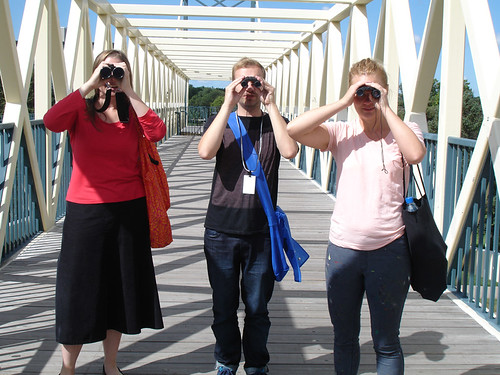 |
| Left to right: Abbie, Hans, and Nathalie |
Our excursion began at the picnic tables as Abbie distributed binoculars and describes Open Phenology, her series of nature walks focused on observing ecological phenomena in the Walker’s vicinity.
Abbie: I’m interested in noticing the life forms around us and observing how they change through the seasons. This means looking for birds migrating, insects molting, flowers blooming, etc. These observations, in turn, are the basis for conversation and learning.
Before spotting any avian species, Abbie gathered the group to inspect the insect world. Getting low to the ground at the water’s edge near Spoonbridge and Cherry, the group examined the exoskeletons left behind by metamorphosing dragonflies.
Abbie: See these?
Hans: Like ghosts.
Abbie: Larvae is actually Latin for ‘ghost.’
Hans [on metamorphosis]: It’s like one-day evolution.
Nathalie [clearly curious as to why an art educator takes such interest in biology]: So, what exactly do you do at the museum?
Abbie: Yes, I see what you mean. I’m a biology geek who works in an art museum. So beyond my job, which is supporting the Walker’s education and community programs, I’ve appointed myself as the Walker’s in-house amateur naturalist.
 |
| The Parade: Nathalie Djurberg with music by Hans Berg |
Susy: Why birds?
Nathalie: Before, birds were the least interesting to me—flock animals. Boring. I love animals and watch a lot of nature programs, but avoided bird programs. Then I came across David Attenborough.
Abbie: His documentary on birds of paradise?
Nathalie: Yeah, that guy!
Abbie: After watching Attenborough in Paradise, I felt like this planet is suddenly a totally different world! An astonishing place, but weird, right?
Nathalie: Yeah, though it was before that one that I got into him. And it changed how I see birds. I had no empathy for birds before. Now I really do.
Once across the Hixon Whitney bridge, we again gravitated to water, looking for birds around the pond. By the reeds we discover ducks—not only Mallards, but Wood Ducks, a regal looking waterfowl with a crested head, thin neck, and striking plumage. We spot them as we approach the pond, then peer from the bridge for a clear view. Nathalie runs with her binoculars to the water’s edge for a closer look. We follow.
Abbie [chasing after Nathalie]: I love the investigative impulse!
Abbie [catching up and training binoculars]: You can recognize the Wood Duck by size and shape as well as by its plumage. Their nesting habitat is a tree cavity. Now we build boxes to help them out.
Hans: Are they rare?
Abbie: They’re not too rare, but many birds nest in dead trees, which we cut down. There’s a dead tree by my house that every morning is full of woodpeckers. It’s marvelous to see them. It’s a dead tree, but it’s living to them, because it’s full of bugs.
Nathalie [focusing her binoculars on a male Wood Duck]: Look at its eyes! They’re bright red.
Abbie: The Wood Duck is the showiest bird here.
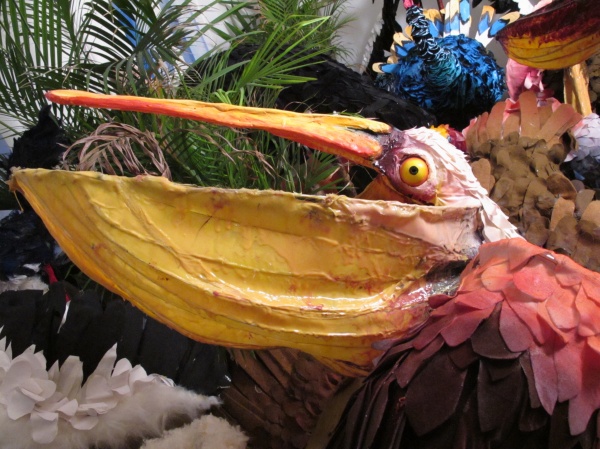 |
| Nathalie Djurberg, studio view of a work in progress, 2010 Courtesy the artists, Zach Feuer Gallery, New York and Giò Marconi, Milan |
Susy: How much of your birds come from actual birds in the world, and how much are derived from sheer imagination?
Nathalie: Most started by my looking at pictures, then really transformed in the process of making them. There were about thirty that came from my imagination. The rest were something specific at the start. Some have transformed so much I couldn’t recognize how they started.
Susy: How do you chose your birds?
Nathalie: I choose the ones I find interesting. Their personalities. How they move their heads. Their colors and patterns.
To witness the pageantry of these feathered forms with your own eyes, venture into the Walker’s Burnet Gallery—The Parade is on view through December 31. In addition to a flock of over eighty delightfully varied bird sculptures, the walls are brought to life by a selection of the artists’ claymation films and the entire space is awash in Hans’ music.
Birding and conversing with Nathalie and Hans has amplified my enjoyment of the show, which is emphatically rich and wild as it is. But after discovering a shared enthusiasm for Attenborough’s BBC documentaries, I found myself thinking, “Wouldn’t David Attenborough just have a field day here!” In a flight of fancy, I imagine a gallery tour led by Attenborough: Clad in khakis with a field guide in his vest pocket, he trains his binoculars on the multitude of exotic species. His hushed voice can hardly contain the exhilaration of catching sight of such strange birds. And lucky for us, this episode of Attenborough’s adventures doesn’t entail travel to an inaccessible tropical paradise, but unfolds in our own back yard.
—Co-authored by Abbie Anderson and Susy Bielak
Labels:
auditory,
awareness,
education,
learning,
subjectivity
Friday, September 2, 2011
Of Cities and Ecosystems
Beginning our walk, my colleague Scott and I corroborate a sighting: Twenty Canada Geese on the field at 9 am. Now's the time of year to look around for Canada Geese staging or look up for their V-shaped flight formations. Fall is settling in—just read the signs.
One such sign is seen on the Irene Hixon Whitney Bridge.
Once across the bridge we encounter . . .
Conversing with Scott is like paging through a neighborhood directory. His familiarity with area residents, business owners, and organizations prompts me to exclaim, "Here I thought this was the city, but it turns out it's a small town!" Listening to Scott talk about the neighborhood, the metaphor I'm imagining is an ecosystem, a network of interrelated parts.
Scott also calls my attention to the squirrels as a marker of ecological intervention. The ubiquitous gray squirrel was introduced to the area in the early twentieth century. And concurrent with the gray squirrel's introduction was the extermination of the red squirrel.
Before crossing Lyndale/Hennepin, our attention is drawn to St. Mark's beautiful lawn shaded by majestic elms. Scanning the lawn, we spot a blue tag on just about every tree trunk. Taking a cue from the Walker's free audio guide, Art on Call, Scott dials up "Trees on Call" to see who's on the other end of the line.
What: Scott's call connects us to a tree specialist. The story behind the little blue tags is Dutch Elm Disease. Since nearby trees had been infected, the church took measures to protect these specimens by having a fungicide administered. Dutch Elm Disease (DED) is caused by a fungus, which in turn is transmitted by elm beetles. This makes the beetle the disease vector. And since this is a phenology blog, I speculate about the beetle's life cycle. September is the time that adult beetles make their way to the base of healthy elm trees to overwinter underground. Next year around mid-late April they'll emerge and fly to the elm's tree top to feed on leaves.
Where: St. Mark's Episcopal Cathedral's front lawn
Observers: Scott and Abbie
Date/Time: September 2, 11:40 am
Conditions: Curiosity satiated (for the time being)
One such sign is seen on the Irene Hixon Whitney Bridge.
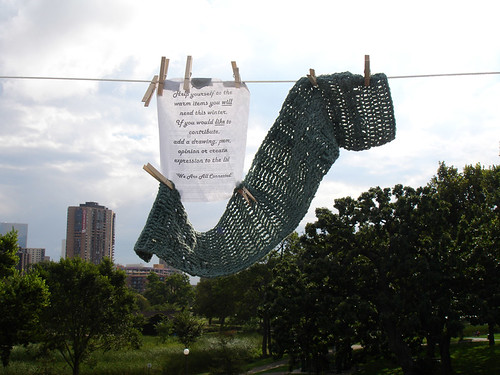 |
What: A clothesline, punctuated with colorful scarves and hats, extends the length of the ramp on both ends of the bridge. Since June, The Swatch Team have called fellow knitters, crochet practitioners, and yarn bombers to unite! And last night, their row-by-row radicalism culminated in this guerrilla installation. A clothesline full of utilitarian, handmade textiles surprised the public with its unfettered generosity. Committed to 'yarn bombing with a message,' the flyer from last evening's give-away reads, Help yourself to the warm items you will need this winter. If you would like to contribute, add a drawing, poem, opinion, or creative expression to this line. We are all connected! Where: Bridge between the Minneapolis Sculpture Garden and Loring Park Observers: Abbie and Scott Date/Time: Friday, September 2, 10:20 am Conditions: Partly cloudy, with a view of the park and the city |
Once across the bridge we encounter . . .
 |
| What: A network of freshly paved paths. Scott explains how neighborhood groups, the Parks Board, and municipal entities agreed upon this new configuration to improve safety for pedestrians and cyclists at this high-traffic corner. Scott, having attended Marcy Schulte's Community Walk About (presented as part of Living Classroom), relays a wealth of information about the park's history and its citizen advocates. Where: Loring Park's southwest corner Observers: Scott and Abbie Date/Time: Friday, September 2, 10:30 am Conditions: The dwindling summer season leaves just enough time for the project's finishing touches—signage and landscaping details. |
Scott also calls my attention to the squirrels as a marker of ecological intervention. The ubiquitous gray squirrel was introduced to the area in the early twentieth century. And concurrent with the gray squirrel's introduction was the extermination of the red squirrel.
Before crossing Lyndale/Hennepin, our attention is drawn to St. Mark's beautiful lawn shaded by majestic elms. Scanning the lawn, we spot a blue tag on just about every tree trunk. Taking a cue from the Walker's free audio guide, Art on Call, Scott dials up "Trees on Call" to see who's on the other end of the line.
 | ART ON CALL is to ART as . . . (Images courtesy Walker Art Center) |  |
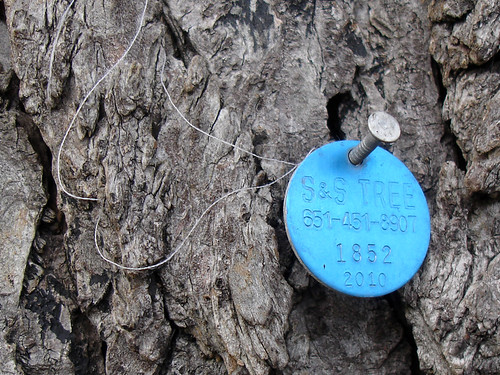 | TREES ON CALL is to TREES | 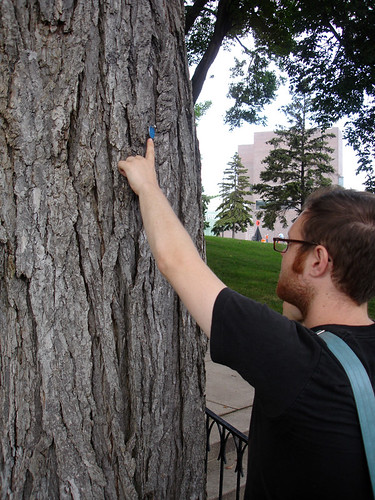 |
What: Scott's call connects us to a tree specialist. The story behind the little blue tags is Dutch Elm Disease. Since nearby trees had been infected, the church took measures to protect these specimens by having a fungicide administered. Dutch Elm Disease (DED) is caused by a fungus, which in turn is transmitted by elm beetles. This makes the beetle the disease vector. And since this is a phenology blog, I speculate about the beetle's life cycle. September is the time that adult beetles make their way to the base of healthy elm trees to overwinter underground. Next year around mid-late April they'll emerge and fly to the elm's tree top to feed on leaves.
Where: St. Mark's Episcopal Cathedral's front lawn
Observers: Scott and Abbie
Date/Time: September 2, 11:40 am
Conditions: Curiosity satiated (for the time being)
Saturday, August 27, 2011
Subdividing the Summer
A month ago, when cicada calls sparked my curiosity, I corresponded with a cicada enthusiast who remarked,
August 12: Eastern Forktails on the scene, abundant
August 19: Abundant and diverse dragonflies and damselflies. A lot of unfinished work in terms identification.
August 26: Emergence of an unidentified dragonfly, as inferred by the presence of abundant exuviae.
August 26: Damselflies (possibly a species of sprite) mating; Eastern Forktails are still present but (by my estimation) less abundant than 2 weeks prior.
If I added some expertise and methodology (some science, if you will) to my practice, how sophisticated could this chronology become? But rather than pursuing a single focus (dragonflies, for example), Open Phenology cast its net broadly. I've had the opportunity to share this project with collaborators with diverse specialties, ranging from ornithology to botany, audio engineering to phenology, sculpture conservation to ecology. Open Phenology's expansive approach is key to its strenghths:
"I love the way cicadas subdivide the summer for me. I suppose studying any summer fauna does the same."And though I'm very green at my 'studies,' I share this impression. I say 'impression' because my haphazard observations are painted with a broad brush rather than rendered by well-informed study and systematic record-keeping. None-the-less, here's how my sub-divided summer has played out:
August 12: Eastern Forktails on the scene, abundant
August 19: Abundant and diverse dragonflies and damselflies. A lot of unfinished work in terms identification.
August 26: Emergence of an unidentified dragonfly, as inferred by the presence of abundant exuviae.
August 26: Damselflies (possibly a species of sprite) mating; Eastern Forktails are still present but (by my estimation) less abundant than 2 weeks prior.
If I added some expertise and methodology (some science, if you will) to my practice, how sophisticated could this chronology become? But rather than pursuing a single focus (dragonflies, for example), Open Phenology cast its net broadly. I've had the opportunity to share this project with collaborators with diverse specialties, ranging from ornithology to botany, audio engineering to phenology, sculpture conservation to ecology. Open Phenology's expansive approach is key to its strenghths:
- Accessible to multiple publics, Open Phenology has no prerequisite knowledge base or skill set.
- Open Phenology values synthesis and interconnections as a way of understanding the world.
- Open Phenology promotes non-hierarchical exchange of information.
- Through facilitated conversations and discovery, Open Phenology emphasizes empirical observation. A frame is drawn around this activity, calling attention to its legitimacy and authenticity.
- In addition to recording what we do see, participants are encouraged to consider what we don't see and this leads to speculations, hyphotheses, and sustained curiosity.
Throughout the summer I've been negotiating Open Phenology's ambiguous relation to science. I have maintained all along that Open Phenology is not science, and while I'm content with this, it makes me wonder about lost opportunities. How would I modify Open Phenology to bring it into alignment with scientific inquiry? Specialization is the answer. Here are some citizen science endeavors on my radar:
- Use Cornell Ornithology Lab's NestWatch or eBird to collect data on birds.
- Participate in the Minnesota Odonata Survey Project
- Collect and share information about Lepidoptera on BAMONA (Butterflies and Moths of North America)
- Join USA National Phenology Network's call to take the pulse of our planet. Select one or two species to study and record.
Labels:
change,
citizen science,
continuity,
locality,
pattern,
speculation
Friday, August 26, 2011
Larvae* at Large
You can see a lot just by observing.—Yogi Berra
What you see is what you see.—Frank Stella
So, just what was to be seen today? The first animal that got our attention was a hawk, in flight and calling. David and I agreed it was either a Sharp-shinned or Cooper's and a good start to the day. And heading over to the pond, seeing a single nymph (below) led to seeing dozens.
What: Abundant exuviae, the discarded exoskeletons left by dragonflies in their transition from aquatic larvae to terrestrial, winged adults. (Resource: Dragonfly Biology 101)
Where: Clinging to aquatic plants growing in the shallow west edge of the pond at Spoonbridge and Cherry
Observers: Abbie, David, and Elizabeth
Date/Time: Friday, August 26, about 10:10 am
Conditions: Sunny. July's oppressive heat is a thing of the past.
As a phenologist, albeit an amateur, this observation prompts important questions. First, what species were we seeing? Just one or a few varieties? These exuviae were about 1.5" long, and had I been vigilant, I might have glimpsed a dragonfly making its exit. Second, when exactly did these nymphs emerge? I didn't notice them last week, but had I simply failed to see them? Or was this legitimately a recent phenomenon?
What: Caterpillar, unidentified and stationary
Where: Eye-level on a flowering plant, arbor at the north edge of the Sculpture Garden
Observers: Spotted by David, observed by Abbie and Elizabeth
Date/Time: Friday, August 26, 10:35 am
What: Another unidentified caterpillar, this one was scurrying across the sidewalk
Where: East edge of the Sculpture Garden, base of the stairs to the Irene Hixon Whitney Bridge.
Observers: Abbie and Kristen
Date/Time: Friday, August 26, at about 11:30 am
*Larva (plural larvae), is Latin for 'ghost.' A larva is the juvenile form of any animal that undergoes metamorphosis into its adult form. A caterpillar is the larval form of moths and caterpillars, while nymph is the larval form of dragonflies and damselflies. All this talk of larvae reminds me of the Goldenrod Gall Fly, that saccharine treat I learned about when Sarina joined Open Phenology on July 8.
Labels:
awareness,
collaboration,
continuity,
development,
ephemerality,
speculation,
unseen,
vocabulary
Monday, August 22, 2011
Make hay while the sun shines
Well, someone did! Just as I was thinking about revisiting the medians (between Hennepin and Lyndale Avenues, see my post from July 26) to find some grasshoppers and crickets, I discover I'm too late. On Monday I notice the tall grasses, thistles, sun flowers, dock weed, and more have been completely mowed to the ground.
Friday, August 19, 2011
The Garden as a place for questions
Today's conversation was enriched by Alex, a participant new to Open Phenology. As a sculpture technician, Alex works with Walker staff to keep the outdoor sculptures in good condition. I like to think of our parallel experiences: while I've been surveying the Garden's living residents, she's been tending to its non-living structures. As I've been witness to time passing in biological terms, for her time is evidenced by erosion, mineral deposition, oxidation, and other forces of the earth sciences.
Besides our shared landscape, what do Alex's and my experiences have in common? Questions! From "Will you take our picture?" to "So, why is this art?," Alex and I concur that Garden visitors are curious and inquisitive. What sculpture prompts the most questions? In Alex's experience, the winner is Dan Graham's Two-way Mirror Punched Steel Hedge Labyrinth. Maybe this work's deceptive simplicity inspires a skeptical response like, "But it's only glass windows! What's so great about that?" "Well," Alex reminds us, "We're only carbon." As an art history student with career plans in art conservation, Alex seems to enjoy the dual nature of things, simultaneously considering their material nature while contemplating their conceptual and expressive potential.
What: A Green Heron—Kudos to Alex who spotted this one just moments before it got skittish and flew. Maybe not a significant phenological marker, but one of my favorite birds to share with non-birders, who are usually struck by its short stature in comparison to the Great Blue Heron.
Where: At the pond's edge, near Spoonbridge and Cherry
Observers: Abbie, Alex, and Martha
Date/Time: Friday, August 19, around 10:15 am
Conditions: Slightly overcast and breezy, about 75°
What: Damselfly, unidentified species, possibly a sprite. We saw a variety of dragonflies and damselflies drifting along the water's edge and darting across the pond, but this is the only photo worth sharing.
Where: Pond's edge, near Spoonbridge and Cherry
Observers: Abbie, Alex, and Martha
Date/Time: Friday, August 19, 10:10 am
Conditions: Dragonflies are a challenge to observe and identify! I'm tempted to invest in a pair of close-focusing binoculars and a specialized field guide. If you can ID this one, please comment.
What: Butterfly, probably a Monarch, on swamp milkweed flower. (Seeing this made me wish I were a more diligent phenologist, the type who dependably notes the season's first sighting. And speaking of first occurrences I've failed to record, most of the common milkweed plants I see around town finished flowering a while ago and have sizable green pods by now.)
Where: Arlene Grossman Memorial Arbor and Flower Garden
Observers: Abbie, Alex, and Martha
Date/Time: Friday, August 19, around 10:40 am
Conditions: Abuzz with insects. Also a good locale to spy Black-capped Chickadees and Mourning Doves.
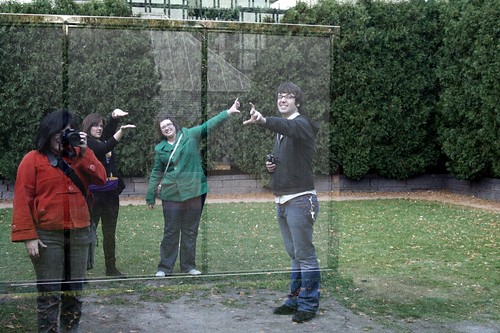 |
| Photo by Sharyn Morrow |
What: A Green Heron—Kudos to Alex who spotted this one just moments before it got skittish and flew. Maybe not a significant phenological marker, but one of my favorite birds to share with non-birders, who are usually struck by its short stature in comparison to the Great Blue Heron.
Where: At the pond's edge, near Spoonbridge and Cherry
Observers: Abbie, Alex, and Martha
Date/Time: Friday, August 19, around 10:15 am
Conditions: Slightly overcast and breezy, about 75°
What: Damselfly, unidentified species, possibly a sprite. We saw a variety of dragonflies and damselflies drifting along the water's edge and darting across the pond, but this is the only photo worth sharing.
Where: Pond's edge, near Spoonbridge and Cherry
Observers: Abbie, Alex, and Martha
Date/Time: Friday, August 19, 10:10 am
Conditions: Dragonflies are a challenge to observe and identify! I'm tempted to invest in a pair of close-focusing binoculars and a specialized field guide. If you can ID this one, please comment.
What: Butterfly, probably a Monarch, on swamp milkweed flower. (Seeing this made me wish I were a more diligent phenologist, the type who dependably notes the season's first sighting. And speaking of first occurrences I've failed to record, most of the common milkweed plants I see around town finished flowering a while ago and have sizable green pods by now.)
Where: Arlene Grossman Memorial Arbor and Flower Garden
Observers: Abbie, Alex, and Martha
Date/Time: Friday, August 19, around 10:40 am
Conditions: Abuzz with insects. Also a good locale to spy Black-capped Chickadees and Mourning Doves.
Labels:
collaboration,
development,
education,
ephemerality,
unseen
Wednesday, August 17, 2011
No Lake is an Island
Today at 1 pm there's a public event to launch the islands.
Read more about who's involved in this management initiative and how the islands work at Josephine Marcotty's True North Star Tribune blog: http://www.startribune.com/local/blogs/127522343.html.
Labels:
change,
collectivity,
ecology,
education,
human intervention,
interrelatedness,
locality,
mapping,
stewardship
Saturday, August 13, 2011
Neato! Nidulariaceae!
What: Bird's Nest Fungi—It's always a thrill (for me) to see weird mushrooms and molds. These little marvels were thriving in the wood chip mulch of a modest flower garden. Possibly Cyathus striatus.
Where: Midtown Farmers Market near Lake St and Hiawatha Ave
Observer: Abbie, Marti, Scott, Jeff
Date/Time: Saturday, August 13, 11 am
Conditions: Clear sky and sunny, drying up the damp from previous night's storm
Where: Midtown Farmers Market near Lake St and Hiawatha Ave
Observer: Abbie, Marti, Scott, Jeff
Date/Time: Saturday, August 13, 11 am
Conditions: Clear sky and sunny, drying up the damp from previous night's storm
Friday, August 12, 2011
While You Were(n't) Looking
What: Eastern Forktail, Ischnura verticalis—I would have missed these had I not paused and stooped by the water's edge. These dainty damselflies, at just over 1" long, hover low to the ground. Interested in learning more about dragonflies (or, as they're known to taxonomists, Order Odonata)? Check out Minnesota Odonata Survey Project (MOSP).
Where: Pond perimeter, near Spoonbridge and Cherry
Observers: Abbie (and, via Internet, Kurt Mead, MOSP educator and scientist, who identified this insect by species name)
Date/Time: Friday, August 12, 10:20 am
Conditions: Overcast and 70°-ish
What: Abloom, left to right: Joe-pye Weed towers at about 7' tall; hibiscus bloom 8" in diameter; and the Honka dahlia finally on the scene (as anticipated in June by Open Phenologist Lindsay)
Where: Arlene Grossman Memorial Arbor and Flower Garden, north edge of the Minneapolis Sculpture Garden
Observer: Abbie
Date/Time: Friday, August 12, 10:30 am
Conditions: a-buzz with insect pollinators and pests
What: I'm reluctant to report these harbingers of fall, left to right: Maturing spruce pine cones (compare to this picture from May 27); yellowing locust tree leaves; and maturing arborvitae cones (compare to this picture taken June 1)
Where: Minneapolis Sculpture Garden and The Grove (entrance to the Walker off Vineland Place)
Observer: Abbie
Date/Time: Friday, August 12, between 10 and 11 am
Conditions: Warm and overcast—insistently summery with incipient signs of autumn
Where: Pond perimeter, near Spoonbridge and Cherry
Observers: Abbie (and, via Internet, Kurt Mead, MOSP educator and scientist, who identified this insect by species name)
Date/Time: Friday, August 12, 10:20 am
Conditions: Overcast and 70°-ish
 | 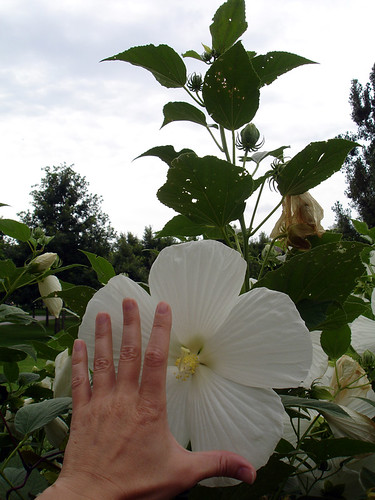 |  |
Where: Arlene Grossman Memorial Arbor and Flower Garden, north edge of the Minneapolis Sculpture Garden
Observer: Abbie
Date/Time: Friday, August 12, 10:30 am
Conditions: a-buzz with insect pollinators and pests
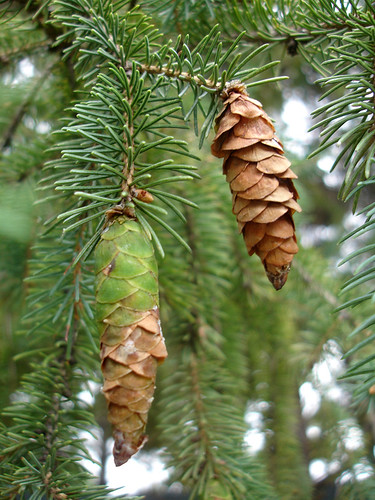 |  | 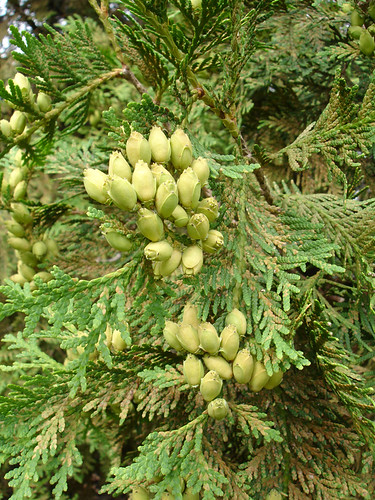 |
Where: Minneapolis Sculpture Garden and The Grove (entrance to the Walker off Vineland Place)
Observer: Abbie
Date/Time: Friday, August 12, between 10 and 11 am
Conditions: Warm and overcast—insistently summery with incipient signs of autumn
Labels:
change,
collaboration,
continuity,
ephemerality,
learning,
maturation
Friday, August 5, 2011
Noisy Streets and Quiet Gardens

The morning of August 5th was a hot one. Two brave phenologists were not deterred. We met at the FlatPak House, and feeling bold, decided to make a trip across the Armajani bridge to Loring Park. Our plan was take the stroll and observe carefully, embracing the time in our morning to appreciate our surroundings. As we walked up the steps we were struck with the loud roar of traffic from below. The sound and speed of the moving cars took on a different meaning from our elevated prospect. We reflected on the chaos of everyday life, and became more aware of the drone of noise always around us in a city. From this position we even spotted some sunflowers on the side of the road. Such a thing would surely go unnoticed from our car. We were off to great start!


The sound of traffic went as suddenly as it came. Once across the bridge we were greeted with green grass and peaceful quiet. In the morning heat the park was lush and filled with many shades of green. Tall grasses and cattails had completely overtaken a section of the pond. Not even a patch of open water could be seen. In them we heard the rusting of birds and other animals. It seemed a nice and shady spot for many small critters.
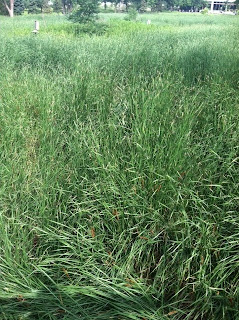

Our stroll through the park gave us an opportunity to appreciate the overwhelming amount of growth during the season. Beautiful flowers were everywhere as were mallards and butterflies. As we made our way back to the bridge we felt energized and rejuvenated from the trip. Taking in our surroundings in this way was refreshing. We discussed how easy it is to miss all the exciting things happening in your immediate surroundings. As we climbed up the steps, my fellow phenologist commented that the sky looked unmistakably of summer. I agreed and we wondered if our conclusion was due to context or if we were on to something. Does the look of the sky really change through the seasons? If so, in what ways? Readers, if you were to picture a quintessential summertime sky, would it look like this?

Labels:
collaboration,
learning,
locality,
maturation,
speculation
Friday, July 29, 2011
Simulated Soundwalk
A soundwalk is any excursion whose main purpose is listening to the environment. Today I was joined by Brian, a friend, composer, sound engineer, and educator. The sound collage below roughly represents a few of the auditory sensations along our path through the Sculpture Garden. (And just like in real life, some of these sounds are soft and others a little louder...)
Above: YouTube media by waitingline
Above: Vimeo media by Maureen Mcsmith
Above: YouTube media by jkontrad
Above: YouTube media by Greg Holmes of thelope.com
Above: YouTube media by yaaren
What: Part of our process was imagining how the Walker's sound environment changes through the seasons. For example, by late July, the Red-Winged Blackbirds don't sound like this anymore. A detailed map of our soundwalk is available here, with descriptions at each placemarker. If you're interested in trying a soundwalk on your own, here is a suggested 'score' I adapted from an essay by Hildegard Westerkamp. Additional thanks to Frauke Behrendt for support and resources.
Where: Minneapolis Sculpture Garden
Observers (Listeners): Abbie and Brian
Date/Time: Friday, July 29, 10 to 11 am
Conditions: Hot, sunny, sonic
Above: YouTube media by waitingline
Above: Vimeo media by Maureen Mcsmith
Above: YouTube media by jkontrad
Above: YouTube media by Greg Holmes of thelope.com
Above: YouTube media by yaaren
What: Part of our process was imagining how the Walker's sound environment changes through the seasons. For example, by late July, the Red-Winged Blackbirds don't sound like this anymore. A detailed map of our soundwalk is available here, with descriptions at each placemarker. If you're interested in trying a soundwalk on your own, here is a suggested 'score' I adapted from an essay by Hildegard Westerkamp. Additional thanks to Frauke Behrendt for support and resources.
Where: Minneapolis Sculpture Garden
Observers (Listeners): Abbie and Brian
Date/Time: Friday, July 29, 10 to 11 am
Conditions: Hot, sunny, sonic
Labels:
auditory,
awareness,
change,
collaboration,
education,
expansive,
learning,
mapping,
speculation,
unseen
Tuesday, July 26, 2011
Median: No Man's Land or Guerilla Garden
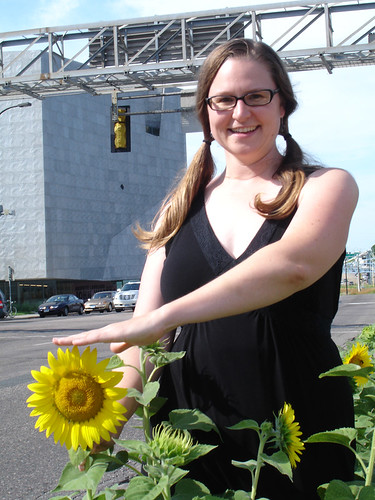 | |||
| Abbie in the 'median garden' Photo by Christina |
Where: Median between Hennepin and Lyndale Avenues (see the Walker in the background)
Observers: Christina and Abbie
Date/Time: Tuesday, July 26, about 3 pm
Conditions: Sunny, hot, traffic
Rumor has it these sunflowers are non-conformists, the rogue plantings of horticultural vandals. The next median to the north (behind me in the photo) is uniformly planted with tall grasses, evidence of some management plan though I don't know the details.
If you know the dirt on medians, roadsides, highway clover-leafs, or the centers of round-abouts, and the powers that battle over these marginalized territories, please do tell! Broadcast your comments here.
Labels:
anticipation,
collaboration,
human intervention,
locality,
maturation,
speculation
WAS // NOW
On my bike ride to work this morning, I made a short list of how things were but are no longer:
- Dock weed
- was: green flower stalks . . .
- now: rusty spindles
- Canada thistle
- was: flowering . . .
- now: almost all gone to down
- Bee balm
- was: unnoticed . . .
- now: beautiful pale violet blossoms
- Cow parsnip
- was: green umbels with seeds forming . . .
- now: umbels are brown in color
- Clovers
- was: in June, only white clover flowers
- now: by July, the purple clovers complement the scenery
Labels:
change,
continuity,
development,
ephemerality,
maturation
Monday, July 25, 2011
Purple, Past and Present
|
|
Where: General observations of urban landscapes (Bee balm noticed in Loring Park, at the edge of the wetland area; thistle flowers in road medians and along the edge of Loring Park's pond; crown vetch along the highways)
Observer: Abbie
Date/Time: Monday, July 25, 12:30 pm
Conditions: Inconstant and colorful
Saturday, July 23, 2011
By light of luciferin and luciferase
Though this post strays far afield from my Walker-centric focus, it merits mention because fireflies, to me, are the very symbol of fleeting summer. Their bioluminescence results from the reaction of two chemicals, luciferin and luciferase. Let this be a challenge to you to venture outdoors in the evening to spot these insects that are homely by day and hypnotic by night.
Where: Waseca airport
Observer: Abbie, Scott, Emily
Date/Time: July 22 evening into night
Conditions: Mosquitoey
Above: Vimeo media by John Dunstan
What: FirefliesWhere: Waseca airport
Observer: Abbie, Scott, Emily
Date/Time: July 22 evening into night
Conditions: Mosquitoey
Monday, July 18, 2011
Grackle Vernacular
Above: YouTube media by laynie0705
What: Since it is World Listening Day I make extra efforts to notice the sonic qualities of Garden ongoings. I hear young Common Grackles vocalizing. Watching them, I see they are begging food from their parents. It looked like what you see above, but with lots more needy pleading.
Where: West edge of the Sculpture Garden, by FlatPak House
Observer: Abbie
Date/Time: July 18, 8:10 am
Conditions: Warm, sunny
What: I hear a sudden squawk and it focuses my attention to a clash in a low tree branch. A few Cedar Waxwings get the message that they're not wanted here and fly away. I may have missed them entirely had it not been for the noisy complaint of the Common Grackle.
Where: West edge of the Sculpture Garden, by FlatPak House
Observer: Abbie
Date/Time: July 18, 8:15 am
Conditions: Warm, sunny
Sunday, July 17, 2011
"Now I will do nothing but listen. . . . I hear all sounds running together, combined, fused or following, sounds of the city and sounds out of the city, sounds of the day and night. . ."
St. Mary's Basilica bells, YouTube media by Markitectonic
If you say hello to me tomorrow morning between 8 and 8:30 am, I won't reply. But I'll most certainly hear you because I'll be engaged in a soundwalk. What is a soundwalk? Jim Cummings, founder of the Acoustic Ecology Institute, defines it as follows:
Walt Whitman
St. Mary's Basilica bells, YouTube media by Markitectonic
If you say hello to me tomorrow morning between 8 and 8:30 am, I won't reply. But I'll most certainly hear you because I'll be engaged in a soundwalk. What is a soundwalk? Jim Cummings, founder of the Acoustic Ecology Institute, defines it as follows:
At its simplest, a soundwalk is just what its name implies: a walk during which you simply pay attention to each sound you encounter. More complex variations can include seeking out the most distant sound audible, or the faintest. Soundwalks are just as interesting in cities as in nature, and indeed, urban acoustic ecology offers many points for reflection and even aesthetic appreciation.
Saturday, July 16, 2011
Flowering virginia creeper
Yet another observation from my weekend wanderings. There's probably flowering Virginia creeper to be found around the Walker, perhaps in Loring Park.
What: Flowering Virginia Creeper. The image to the left zooms in on this inconspicuous flower.
Where: Shakopee, MN
Observer: Abbie
Date/Time: July 16, 12 noon
Conditions: Sunny, humid, hot
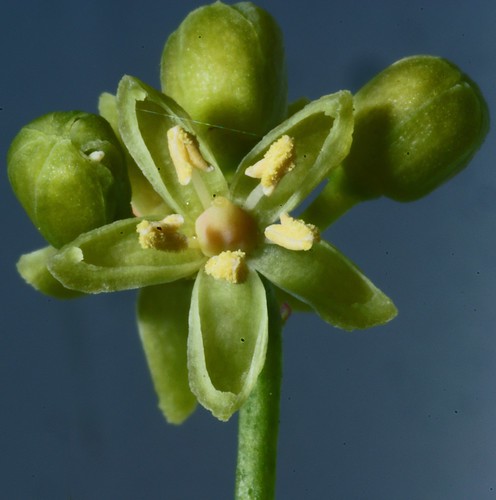 |
Virginia Creeper flower & buds Photo by Derek Lilly |
 |
Virginia Creeper foliage Photo by J. C. Lucier |
What: Flowering Virginia Creeper. The image to the left zooms in on this inconspicuous flower.
Where: Shakopee, MN
Observer: Abbie
Date/Time: July 16, 12 noon
Conditions: Sunny, humid, hot
Friday, July 15, 2011
A study in green
The color green can look remarkably vibrant in rainy conditons. Today's report comes from that chromacentric point of view.
General observation for today: Birds were abundant. Those on the ground busied themselves by foraging (gorging?), and those perched were entirely preoccupied with preening. My complete bird list for the day: Northern Cardinal, White-breasted Nuthatch, Rock Pigeon, American Robin, Green Heron, House Finch, Red-winged Blackbird, Mourning Dove, Common Grackle
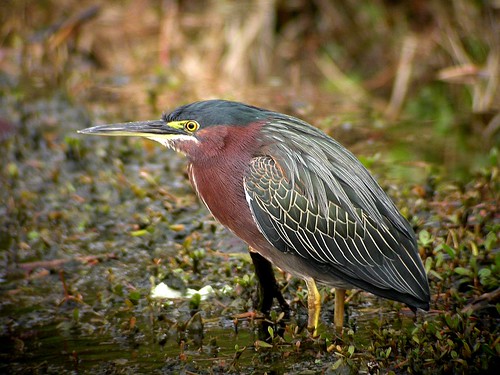 |
Photo by Len Blumin What: A Green Heron. With the rain and poor lighting, I couldn't get a good shot, so I borrowed this stunning image from a fellow Flickr photographer. I observed it for few minutes, during which it ceaselessly preened itself. This sighting isn't ephemeral or critical to phenology, but it was fun to see in an urban park. Where: Perched about 15' high in a pine tree, on the eastern edge of the Garden, a lot of traffic noise coming from Hennepin Avenue. Observer: Abbie Date/Time: July 15, 10:35 am Conditions: On-and-off rain, humid, low-hanging clouds obscuring the city skyline. |
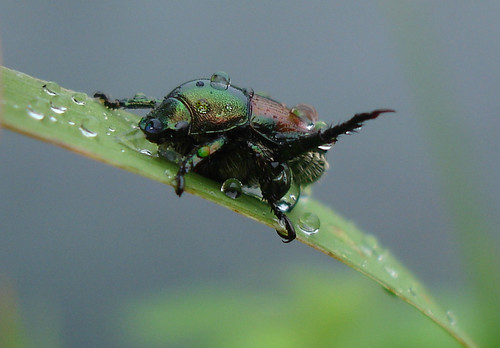 |
What: A Japanese beetle, about 3/8" in length. Kinda' pretty but totally pesky! This observation is a good phenological marker, as you can see from this diagram of the Japanese beetle's life cycle. Where: Water's edge at Spoonbridge and Cherry. Observer: Abbie Date/Time: July 15, 10:20 am Conditions: Wet but not raining |
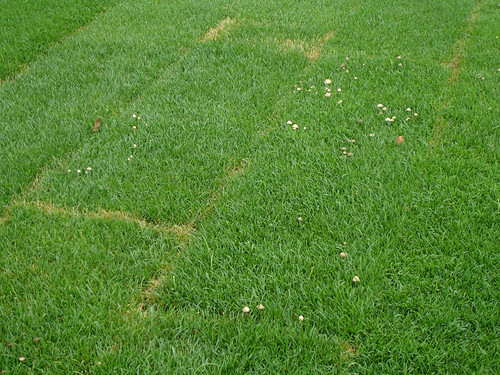 |
What: Green grass and a troop of mushrooms. Or are these gregarious? Mushrooms in a close group (but not so close as to be a cluster) are said to be a troop. If the group is more scattered and irregular, they are said to be gregarious. Eager for more vocabulary for fungi growth habits? Check it out: http://www.mushroomthejournal.com/greatlakesdata/Terms/troop269.html Where: Open Field, north edge along Vineland Place Observer: Abbie Date/Time: July 15, 10: 45 am Conditions: Good for growing |
Thursday, July 14, 2011
Hey, listen up!
World Listening Day is next Monday, July 18. To participate, I'm planning a 30-minute soundwalk at 8 am, starting at FlatPak House. This is a pilot experience to inform the "Soundwalk Listening Experiment" planned for July 29. I've posted some resources about outdoor listening and acoustic ecology on this site's Soundwalk Page.
Tuesday, July 12, 2011
Cicada, droning unseen
| What: Cicada song, probably a 'dog day cicada.' (No, this isn't my field recording. This audio is a different species, Tibicen auriferus, courtesy the outstanding library of cicada recordings at InsectSingers.com.) Where: W 22nd St between Garfield and Harriet Avenues Observer: Abbie Date/Time: July 12, 5:50 pm Conditions: Sunny, warm, pleasant |
Cicada? Ah, summer! [. . .on to the next thought. . .]But with the Open Phenology mindset, my awareness behaves differently:
Cicada? And it's... July 12! Hey, isn't that the first I've heard this year? [inventorying recent memory...] No, no, none yet—I would have noticed. Will it sing again? Only that once? Eventually, (when, do you think?) the cicada chorus will be a regular feature of the summer afternoon sounds. Late summer, that is. Sigh...
Monday, July 11, 2011
Dock Swatch
Inspired by an observation the Open Phenology group made last Friday, I collected specimens to create this "dock swatch." As the plants' flower spires turn rusty in color, you'll spy this 'weed' proliferating on banked sides of highways.
Friday, July 8, 2011
You gonna' eat that?
Open Phenology collaborator Sarina was our guide to the veritable supermarket of the urban Loring Park.
Photos, left to right: Pepperweed by Dan Mullen; Dock weed by Abbie; Wood sorrel by Judi Cox; Arrowhead by Dave
Thinking of plants in these terms (edible/non-edible) must play a role in learning, because Sarina was identifying plants left and right, up and down, and sharing this knowledge with other eager participants.
Care to join us for dessert? Perhaps later this season we'll harvest some goldenrod galls. Here's a fact that's hard to believe (but easy to remember): Inside each gall is a larval fly absorbing sugar from the plant, and if you get it at the right time of year, it's a sweet treat! That's right—to eat!
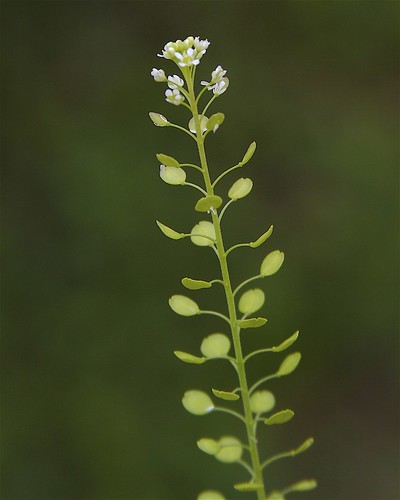 |
| Pepper/Spice? |
 |
| Cereal? |
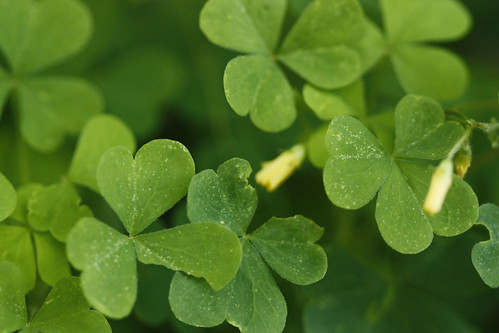 |
| Tangy greens? |
 |
| Duck Potato? |
Thinking of plants in these terms (edible/non-edible) must play a role in learning, because Sarina was identifying plants left and right, up and down, and sharing this knowledge with other eager participants.
Care to join us for dessert? Perhaps later this season we'll harvest some goldenrod galls. Here's a fact that's hard to believe (but easy to remember): Inside each gall is a larval fly absorbing sugar from the plant, and if you get it at the right time of year, it's a sweet treat! That's right—to eat!
What else did the ten of us see today? Click here to review some of our observations.
Labels:
adaptation,
collaboration,
collectivity,
education,
learning
Subscribe to:
Posts (Atom)

